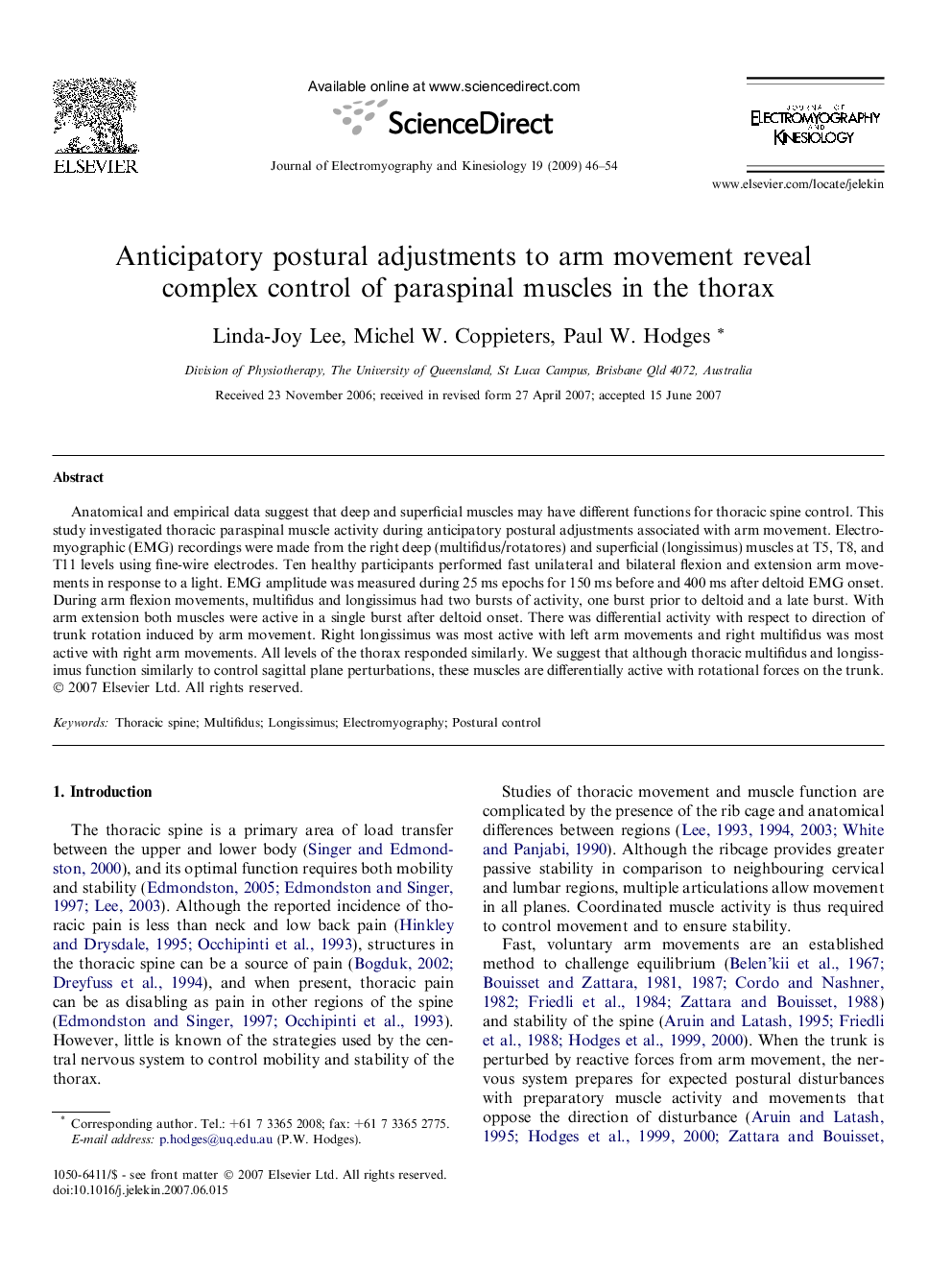| Article ID | Journal | Published Year | Pages | File Type |
|---|---|---|---|---|
| 4065260 | Journal of Electromyography and Kinesiology | 2009 | 9 Pages |
Anatomical and empirical data suggest that deep and superficial muscles may have different functions for thoracic spine control. This study investigated thoracic paraspinal muscle activity during anticipatory postural adjustments associated with arm movement. Electromyographic (EMG) recordings were made from the right deep (multifidus/rotatores) and superficial (longissimus) muscles at T5, T8, and T11 levels using fine-wire electrodes. Ten healthy participants performed fast unilateral and bilateral flexion and extension arm movements in response to a light. EMG amplitude was measured during 25 ms epochs for 150 ms before and 400 ms after deltoid EMG onset. During arm flexion movements, multifidus and longissimus had two bursts of activity, one burst prior to deltoid and a late burst. With arm extension both muscles were active in a single burst after deltoid onset. There was differential activity with respect to direction of trunk rotation induced by arm movement. Right longissimus was most active with left arm movements and right multifidus was most active with right arm movements. All levels of the thorax responded similarly. We suggest that although thoracic multifidus and longissimus function similarly to control sagittal plane perturbations, these muscles are differentially active with rotational forces on the trunk.
